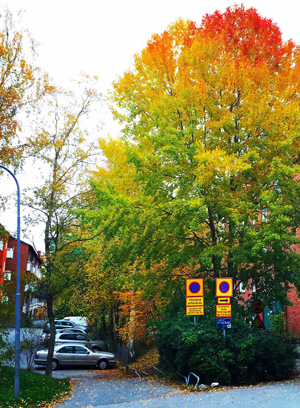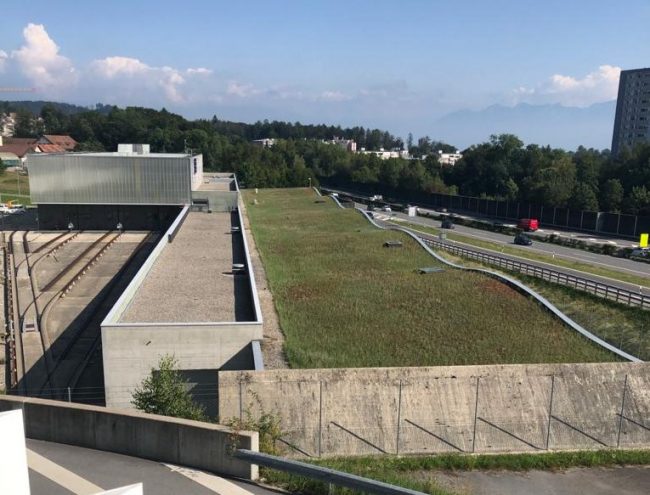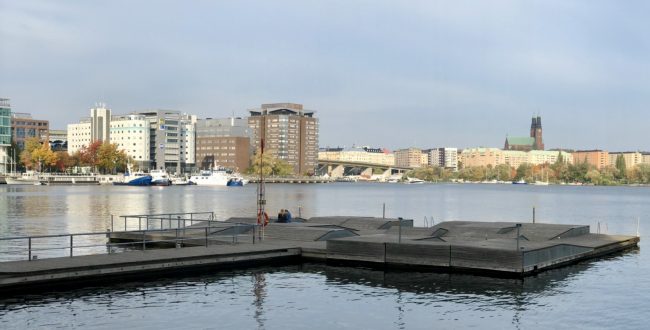“tropical nights’ and greening our cities

Much of England experienced a series of ‘tropical nights’ last summer, when night time temperatures were 20oC or above. These tropical nights were associated with the heat wave that affected most of south east England. Central London experienced its longest stretch of extreme daytime temperatures since the 1960’s - temperatures of 30+oC were recorded on six consecutive days. A number of experts have said that such heatwaves and associated tropical nights are likely to become more common as a consequence of climate change.
We were not alone in experiencing high temperatures by day and night, much of western Europe sweltered in the heat this August. The problem was most marked in urban areas and large cities. Some three-quarters of the population of Europe now live in urban areas. Extreme heat affects our health causing general discomfort, malaise, respiratory problems, headaches, heat stroke, heat cramps and heat-related mortality.
 Urban areas tend to be several degrees hotter than their surrounding rural areas - this is known as the urban heat island effect. For example, London can be up to 10oC higher than the surrounding countryside. Satellite imaging clearly shows this heat island effect- see images here. The differences in temperature between urban and rural areas is mainly to do with how the surfaces in each environment absorb and retain heat. Heat is absorbed by roads, concrete and buildings as opposed to being reflected; waste heat (e.g. from air conditioning) can also contribute to the problem. The layout of towns and cities can also add to the heat build up - tall buildings and narrow streets can trap heat and slow the flow of air, preventing the heat from escaping. There is also the heat from thousands of vehicles.
Urban areas tend to be several degrees hotter than their surrounding rural areas - this is known as the urban heat island effect. For example, London can be up to 10oC higher than the surrounding countryside. Satellite imaging clearly shows this heat island effect- see images here. The differences in temperature between urban and rural areas is mainly to do with how the surfaces in each environment absorb and retain heat. Heat is absorbed by roads, concrete and buildings as opposed to being reflected; waste heat (e.g. from air conditioning) can also contribute to the problem. The layout of towns and cities can also add to the heat build up - tall buildings and narrow streets can trap heat and slow the flow of air, preventing the heat from escaping. There is also the heat from thousands of vehicles.
So, if heatwaves are to become more common, what can be done to make life more tolerable for city / urban residents during periods of high temperatures?
Greening the city streets
Creation of green spaces in / on the streets, walls and roofs is now part of the planning in some major cities. For example, in Paris, people can apply for a “Permis de vègètaliser” which when granted allows residents to plant small gardens on pavements and areas of public land - to make the city greener. Paris is also developing the "World’s largest urban rooftop farm" - there is a small video on the BBC website about this. In Montreal, there is a giant greenhouse on top of a warehouse - growing aubergines and tomatoes. Whilst not a green roof as such, it is a way to grow food where people live and in a sustainable way. A Montreal supermarket also offers an assortment of vegetables grown on its roof; the roof was "greened" to cut greenhouse gas emissions.
A green roof, also known as a living roof or eco-roof, is a roof where vegetation or a habitat for wildlife is deliberately established. There are two broad categories of green roofs:
- Intensive green roofs: these are often irrigated and receive maintenance visits each year. Their ‘soils’ or growing media are quite deep, they may be quite biodiverse. A roof garden sits on top of the Queen Elizabeth Hall.
- Extensive green roofs: these are usually populated with low-growing, drought-tolerant vegetation such as Sedums / stonecrops or dry meadow plants. They are low maintenance and not usually watered (except initially and by rainfall).

A report compiled for the Greater London Authority estimated the total area of green roofs in the Greater London Area was 1.5 million M2. Full details of this report can be downloaded (as a PDF) here. Green roofs can offer a number of benefits, such as
- Sound Insulation from street noise
- An improvement in the visual environment
- Temperature Regulation.
- An improvement in air quality.
- Rainwater Retention
- Biodiversity, not just of plants but insects / pollinators like bees and bumblebees
Green or living walls are also found mostly in urban environments; the plants help reduce the overall temperatures of a building. Generally speaking, plant surfaces do not rise more than 5°C above the ambient temperature and are sometimes cooler. Living walls can sometimes offer opportunities for water reuse, e.g. greywater. They also improve the appearance of buildings. They can sometimes be found inside offices or hotels.
Tree planting.
Sitting in the shade of a tree offers some relief from the intensity of the sun on a hot day. The shade and the ground offers a degree of coolness. As trees lose water from their leaves - the conversion of the water from liquid to vapour takes heat from the surrounding air exerting a cooling effect on the leaves and air (to a limited degree). Many cities have tree planting programs in place. For example, Barcelona, which already has many trees, intends to have 30% of its land area covered by trees (that are resilient to climate change). Apart from a visually more attractive city as a result of this green initiative, areas planted with lots of trees are better able to cope with water run-off (thunderstorms and intense rainfall often follow heat waves). There is also the benefit of increased biodiversity through the creation of micro-habitats for wildlife - especially pollinators like bees and bumblebees.
Changing the albedo of urban architecture.
The albedo is a measure of a surface’s ability to absorb and retain energy, or to put in another way to reflect heat / light energy. Dark coloured objects tend to absorb more light energy than light coloured surfaces. Using pale coloured materials for buildings reduces the energy absorbed from the sun. White roofs and walls have been feature in certain mediterranean / north African areas for some time. Experimental painting of roofs in cities such as Ahmedabad and Hyderabad has shown that indoor temperatures can be significantly reduced by such strategies.
Rivers, ponds and lakes can also exert a cooling effect through reflecting light energy back into space, so creating more water surfaces can help, particularly if coupled with the installation of water jets, sprinklers and ‘water curtains’ in public parks and squares (as has been done in Chrimatistiriou Square in Thessaloniki).

Measures such as these can help reduce the impact of heatwaves; it is the young and the oldest that struggle most. The European heat wave of 2003 resulted in many thousands of deaths, France recorded a death rate some 60% higher than usual for the time of year (August). Paris has now launched an App, Extrema Paris, to help people to find a cooler place in the city, and London has a map-based project of parks and places where one might find some shade or refuge from the heat.
Comments are closed for this post.
